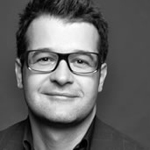Harald Fux from RAUMKUNST SPORTARCHITEKTUR ZT GmbH explains to Stadiaworld when a stadium modernisation makes sense instead of a new stadium and which factors have to be considered.
 |
| Harald Fux |
Stadiaworld: When does a stadium modernisation make sense?
Fux: The modernisation of an existing stadium is mostly linked with an extensive spatial change and is often triggered by various factors – there is always a specific reason. It might be an upcoming major event or when the venue no longer meets league or international standards.
Stadiaworld: What objectives do clubs or sports venue operators pursue with the comprehensive modernisation?
Fux: A modernisation is frequently needed in older stadiums as they have deficits in respect to spectator as well as player comfort. With modernisation, particularly deficiencies in the economic marketability are to be compensated. For example, any modernisation will mostly include an upgrade of hospitality areas and for this it will be needed to completely change a stand.
Stadiaworld: What type of investment has to be made in an extensive modernisation?
Fux: Normally, more than 50 % of the sum which would be needed for a new construction is invested in extensive modernisation measures. It is not only about enhancing comfort levels and improving economic marketability but also about establishing better spatial qualities as well as constructional structures to put the stadium on par with a new construction. In case of modernisation and conversions with lower figures than 50 %, mostly only the remaining usage period is extended.
Stadiaworld: Why does a modernisation often make more sense than a completely new stadium?
Fux: The modernisation of the stadium makes sense if there are components worthy of preservation such as listed parts or which have a great idealistic value. Beyond this, a modernisation in any case is less resource-draining than a demolition or new construction. A modernisation must be seen as critical if the costs are higher than for a new stadium. It is key that a modernisation really provides a sustainable improvement of quality.
Stadiaworld: Does it play a role if the construction is conducted during the ongoing season?
Fux: Modernisations during a season can be quite elaborate – more time and a higher budget are the consequence. But it is also necessary to do an offset. Is it worth it to move to another stadium or does that create additional effort? The most important issue is that modernisation undertaken during the season must not compromise the safety of spectators. A respective minimum capacity and securing of the building site must be ensured so that there is no interference.
Stadiaworld: What options are available for the conversion of athletics stadiums?
Fux: Very often the solution with movable tiers is implemented like, for example, in the London Olympic Stadium or Stade de France. This option however is quite expensive as every time the conversion has to be made or moved out respectively. The choice which design is used to bring the fans closer to the pitch is dependent on the frequency of the use of the running track. A more effective solution for movable tiers was implemented in Glasgow. For the Commonwealth Games 2014 in Hampden Park a second temporary level was drawn-in over the pitch which created the needed geometry. This idea was not particularly spectacular but considerably cheaper and more sustainable.
Stadiaworld: Which stadiums must be modernised in the coming years?
Fux: At RAUMKUNST SPORTARCHITEKTUR ZT GmbH we are currently working on a best practice study for the Ernst-Happel- Stadion in Vienna. For some months now a discussion has been ongoing as to whether a generally desired modernisation or adaption of the venue is a viable option. We are identifying deficits like comfort or marketing and the more the stadium sells out in the future, the greater the demand will be for modernisation and improvement of quality. I think that in the long-term the running track will disappear – however, the preservation order must be questioned and considered with the economic and technical options of modernisation being assessed up until the beginning of 2017. (Stadionwelt, 16.11.2016)
Homepage: RAUMKUNST SPORTARCHITEKTUR ZT GmbH
